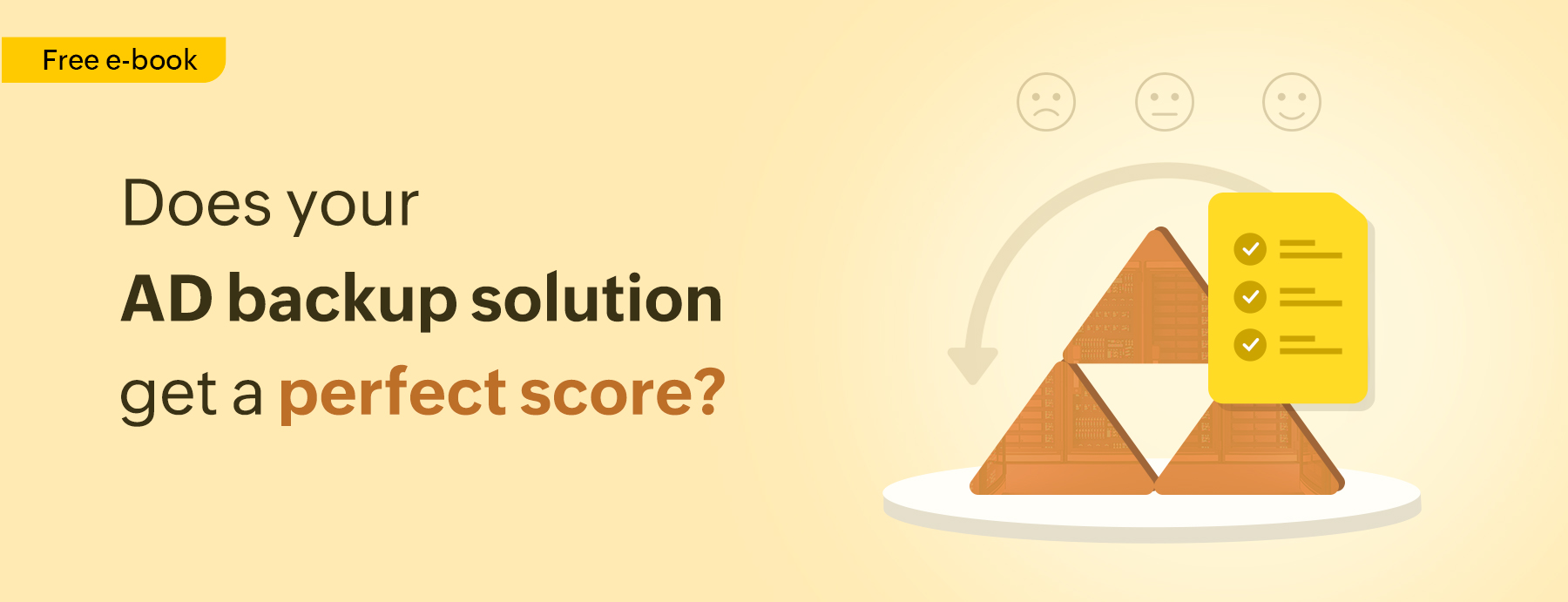
Active Directory disasters come in many forms. Microsoft does provide a native backup and recovery utility, but it falls short of providing complete protection against AD disasters. This blog will look at some shortcomings of the native tools and the necessary features your AD backup solution must have.
- Restart-free recovery
Unless you are restoring a deleted object from the AD Recycle Bin, performing a restoration of any scale using the native tool involves restarting your domain controllers. Until the restart is complete, your domain remains offline, which might impact your organization’s productivity. Your AD backup tool should be capable of performing simple restorations without having to restart your domain controllers. - Incremental backups
The objects in Active Directory undergo a lot of changes on a daily basis. The native backup tool doesn’t support incremental backups, and every backup is a full backup. This exponentially increases the time taken to complete backups and also results in added cost to store all the backup files if you plan on taking a backup daily. Your backup solution must be capable of taking incremental backups. - Backup retention policy
The native backup and recovery tool doesn’t allow administrators to automate deletion of old backups. Since backups taken using the native tool are full backups, administrators have to periodically discard older backups to manage storage space. Your backup tool should be able to automate this process, allowing you to reallocate your time to pressing matters.
In addition to these, there are five other factors that any backup solution should possess. Download this guide and check if your AD backup solution scores a perfect score.
